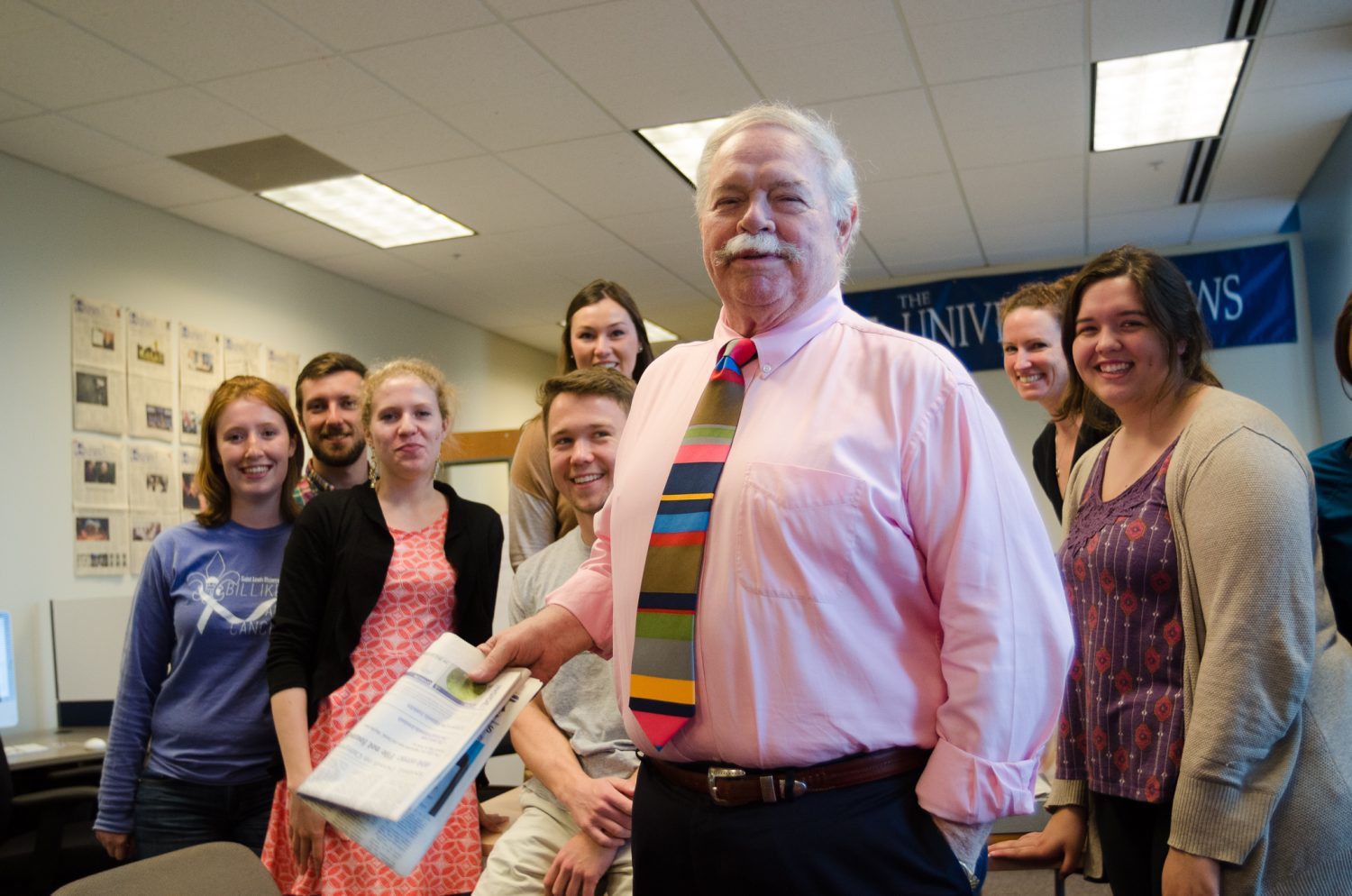The current situation at Saint Louis University regarding shared
governance between the students,administration and faculty is the
result of several events that have occurred during the past several
years. Beginning as early as 1999, talks of a “no confidence” vote
emerging out of the Student Government Association and Faculty
Senate have occurred in response to the amount of power that each
group perceives it has, or lacks, when making decisions or
providing consultation to the administration about decisions
affecting the University. The concept of shared governance and no
confidence has a complicated and intricate history at SLU, and it
includes the following elements:
1999
In April 1999, five years ago to the month, several discussions
concerning a possible “no confidence” vote took place concerning a
sharp increase in parking fees and regulations. At the time, the
president of the SGA, Joseph Hodes, and the president of the
Faculty Senate, Lyn Amine, Ph.D., met with their constituencies and
with University President Lawrence Biondi, S.J. to discuss the
parking fees, as well as a variety of other concerns which included
searches of students entering residence halls on campus and the
revising of The University News charter, which was later
disavowed by the administration.
The students rallied, and the SGA made a motion to vote “no
confidence.” The Faculty Senate was divided; there were members who
agreed with the students and pushed for a Faculty Senate no
confidence vote. However, many members of the Faculty Senate did
not feel that an increase in parking fees warranted a no confidence
vote against the administration and Biondi; the motion for a no
confidence vote was tabled and never passed.
John Slosar, Ph.D., was president-elect of the Faculty Senate in
the 1998-1999 academic year and president for the 1999-2000 and
2000-2001 academic years.
“The (SGA) actually asked the Faculty Senate to vote no
confidence, and there were a few people who were willing to do
that, but that was not justified on the part of the faculty,”
Slosar said.
Slosar was one of the signatories on the agreement set forth in
1999 between the SGA and University administration, notably Biondi.
Slosar said that one of the main aspects of the agreement was that
there would be representation of the faculty and students at the
President’s Coordinating Council meetings from that point on.
However, Slosar said the PCC meetings were held, instead of every
other Tuesday, once a month and that several items of University
business that were normally addressed in PCC meetings were instead
discussed at upper-tier administration meetings with none of the
faculty and student representation that was at the PCC
meetings.
While Slosar was president of the Faculty Senate, he worked with
then-SGA President Jay Perry, who currently works as an assistant
for the president’s office, to remedy damaged relations between the
administration and the faculty and student senates.
“We did our best,” Slosar said. “We worked in good faith to work
with Biondi, and we worked to do so over the last five years, to no
avail.”
An accord was signed between Biondi, Hodes, Perry, Slosar,
Amine, then-provost Sandra Johnson and members of the Staff
Advisory Committee that was to result in a better understanding of
shared governance, including the addition of seats on the PCC for a
representative from the SGA, Faculty Senate and the Staff Advisory
Committee.
The Four Rivers
While many question the legitimacy of this issue and the
importance that several members of the SGA and Faculty Senate have
placed upon it, the painting by Renato Laffranchi that currently
hangs in the John Cook School of Business has created a controversy
that has been discussed for more than four months.
Richard Breslin, Ph.D., current president of the Faculty Senate,
said that he was first alerted to the painting’s content, which
includes a swastika as a symbol of good fortune, by a professor who
felt, along with several other business school professors, that the
painting was offensive and created a hostile work environment. The
Faculty Senate created a resolution requesting that the painting be
removed, on grounds that the artwork’s subject matter is
reminiscent of the Nazi movement in the 1940s, which spurred World
War II.
The request for the removal was denied by Biondi, who said in a
statement that he felt that the request for the painting’s
relocation was “censorship.” “We’re not trying to censor him at
all– we’re trying to provide for the sensitivities of the people
who see this and think of ‘swastika’ and ‘Holocaust,'” Breslin
said.
The search for a new CFO
The search for a new Chief Financial Officer earned the ire of
both the SGA and the Faculty Senate for the methods used to fill
the position, which had been filled by interim CFO Bob Woodruff
since Rob Altholz vacated the position in October 2003. Woodruff
was promoted, as the new CFO.
Breslin said that the faculty handbook states categorically that
if there is a search to fill a key administrative position, then
the faculty is to be involved in the search by way of a faculty
representative on the search committee.
“What makes this problematic was that the search was done in
such a clandestine way,” Breslin said. “It’s almost as though we
are not supposed to say what we think, and if we do say what we
think then we are the ones who are negative.”
In the April newsletter sent to the Faculty Senate, Breslin said
that Biondi “absolutely violated both the letter and spirit of
shared governance at the University.”
The next Faculty Senate meeting, set for April 27, may include a
motion of condemnation of the administration as a result of the CFO
situation.
Upperclassmen scholarships
SGA Financial Vice President Justin Butler decided in October
that a University-wide committee should be formed to evaluate the
possibility of creating an upperclassman scholarship.
The committee included members of the administration and SGA;
they decided that the most feasible way to create an upperclassman
scholarship was through donations from alumni.
The committee was going to ask for $5 million to fund the
scholarship, but the financial aid office, after processing the
figures, thought that the fund would need at least $20 million.
“We figured we could work our way up to the $20 million over
many years,” Butler said.
The committee wrote a bill, passed it in the SGA and SGA
President Nick Sarcone took the resolution to Biondi, who denied
it. However, at the meeting between the SGA executive board and
Biondi, hopes were raised when Biondi said that an upperclassman
scholarship was needed sooner than within the next three to four
years.
Before the end of the academic year Butler, Biondi, Vice
President of Student Development Kathy Humphrey, Provost Joe
Weixlmann Ph.D., and Vice President of Development and University
Relations Don Whelan will meet to discuss the possibility of
forming an upperclassman scholarship.
“I really think that we’re moving in the right direction with
this meeting,” Butler said.
-By Sidney Fey with additional reporting by Nick
Moore





